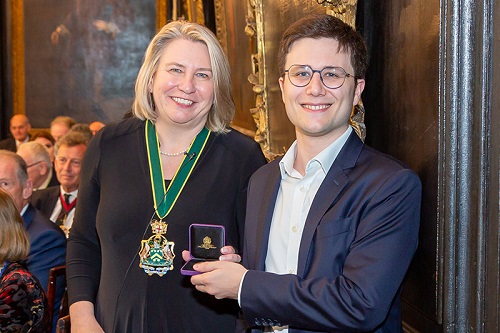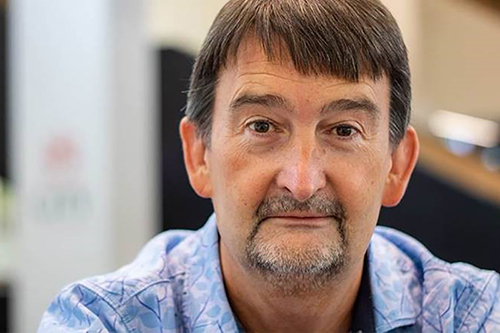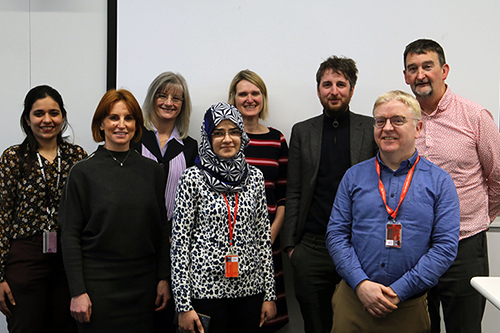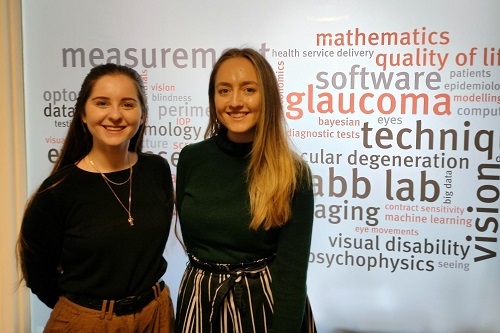The Measurement Techniques in Vision Group (Crabb Lab) consists of a mixture of researchers from optometry, psychology, mathematics, health economics and computer science.
We focus on measurement of vision through a multitude of methods such as assessment of visual fields, ophthalmic imaging, ocular movements and electrophysiology.
We relate stages of chronic eye disease and subsequent visual disability to everyday life. We design new tests for visual disorders, develop software to support clinical decisions and use ‘big data’ to assess the delivery of health services to patients with age related eye disease.
Research Group
Dr Alison Binns
Dr Tamsin Callaghan
Dr Peter Campbell
Professor David Crabb (Group Lead)
Professor David Edgar
Dr Peter Jones
Dr Deanna Taylor
The disciplines within this group seek to explain mechanisms of vision from the retina to the cortex using a range of techniques based on the measurement of involuntary responses, brain imaging, behavioural studies and visual psychophysics.
The Visual Neuroscience labs study how cells along the visual pathway, from the photoreceptors of the retina to the neurons of the visual centres of the brain, process visual information. The work focuses on understanding the properties of visual mechanisms in a variety of species, using anatomical, biochemical, physiological and behaviourally based experimental techniques.
The majority of group members focus on the use of visual psychophysics to study the properties of both low and high level visual mechanisms. Emphasis is placed on studying subjects with damaged visual pathways and / or retinal and systemic diseases that affect vision. As a result, new tests that are specific for detecting early degradation of spatial vision, retinal inhibitory interactions, loss of chromatic sensitivity, binocular summation and motion perception have been developed and found important clinical applications. Improved understanding of the interaction of photoreceptor signals and the corresponding vision changes in the mesopic range led to new developments in lighting with direct application to residential streets.
Research Group
Professor John Barbur
Professor Ronald Douglas
Dr Simon Grant
Professor Michael Morgan
Dr Michael Powner
Dr Marisa Rodriguez-Carmona
Professor Joshua Solomon
Professor Christopher Tyler
The Optics and Occupational Vision (OOV) Group seeks to understand how the optics of the eye affects vision and how this impacts visual requirements in different occupational environments. Our current focus is on ophthalmic optics, smart lighting and the establishment of minimum requirements within visually-demanding occupations. The work of the group has expanded significantly during the last two decades by addressing both clinical and industrial needs with worldwide impact in several working environments. The work has resulted in advanced understanding of mesopic and colour vision as well as the design and evaluation of artificial corneas (keratoprostheses) and intraocular lens optics and the effects of scattered light. We also have an interest in how visual performance changes as a result of ‘normal‘aging, congenital colour deficiency and disease including the effects of blue light on the eye.
The group has developed novel Advanced Vision and Optometric Tests designed to enable accurate measurements of several aspects of vision that are considered important for particular occupations. For example the Colour Assessment and Diagnosis (CAD) test, developed by the group, is currently used throughout the world to assess pilots, firefighters, seafarers, police officers and air traffic controllers. The work of the group is has also led to changes in the minimum vision requirements for a number of occupations.
Advanced Vision and Optometric Tests
Research Group
Professor John Barbur
Dr Marisa Rodriguez-Carmona
Professor Chris Hull
Professor John Lawrenson






